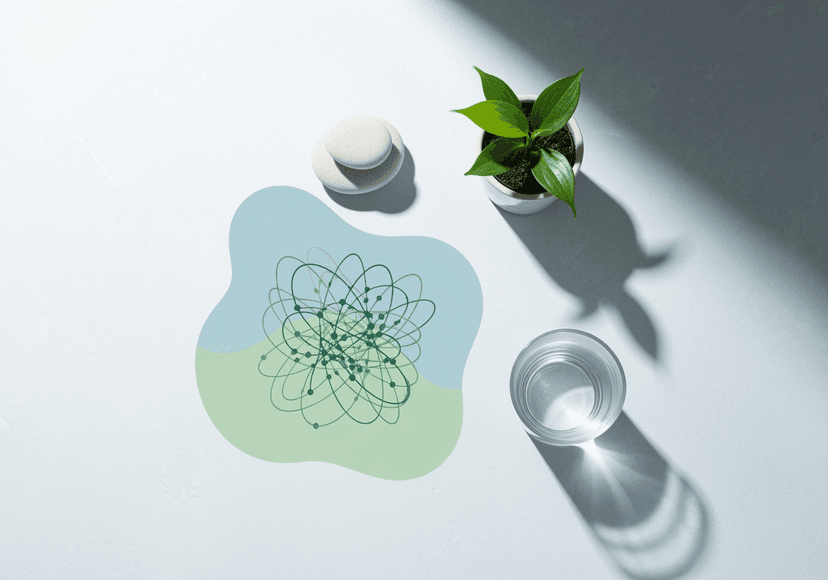
Is a Chemical Peel Painful? What to Expect During the Procedure
16 Nov, 2023
 Healthtrip Team
Healthtrip TeamA chemical peel is a popular cosmetic procedure that can rejuvenate the skin, improve its texture, and address various skin concerns. While it offers numerous benefits, one common question that many people have is, "Is a chemical peel painful?" In this blog, we will delve into the world of chemical peels, explore their pain levels, and provide a detailed overview of what to expect during the procedure.
Most popular procedures in India
A chemical peel is a dermatological treatment that involves the application of a chemical solution to the skin. This solution causes the top layers of the skin to peel off, revealing smoother, fresher skin underneath. Chemical peels are used to treat a variety of skin issues, including:
1. Acne Scars: Chemical peels can help reduce the appearance of acne scars by promoting the growth of new, healthy skin.
Wellness Treatments
Give yourself the time to relax
Lowest Prices Guaranteed!

Lowest Prices Guaranteed!
2. Wrinkles and Fine Lines: They can improve the appearance of fine lines and wrinkles, giving your skin a more youthful look.
3. Sun Damage: Chemical peels can address sunspots, freckles, and other signs of sun damage.
4. Uneven Skin Tone: They can even out skin tone and texture, giving you a more radiant complexion.
The Pain Factor: Is a Chemical Peel Painful?
The level of pain experienced during a chemical peel can vary from person to person and depends on several factors, including the depth of the peel, individual pain tolerance, and skin sensitivity. Let's explore the pain factor associated with chemical peels in more detail:
1. Depth of the Peel:
Chemical peels come in different depths, each targeting specific skin concerns. The depth of the peel plays a significant role in determining the level of pain or discomfort you may experience.
- Superficial Peel: Superficial peels are the mildest option and often involve minimal discomfort. These peels typically use milder acids, such as alpha hydroxy acids (AHAs) or beta hydroxy acids (BHAs). You may feel a mild tingling or a warm sensation during the procedure, but the discomfort is generally manageable.
- Medium Peel: Medium-depth peels penetrate deeper into the skin and may cause more discomfort. The chemical solution used for medium peels, such as trichloroacetic acid (TCA), can lead to a more pronounced burning sensation during application.
- Deep Peel: Deep peels are the most intense and can be uncomfortable. They reach the deepest layers of the skin and often use phenol as the active ingredient. The burning sensation during a deep peel can be more significant, and anesthesia or sedation may be used to manage pain.
2. Skin Sensitivity:
Individuals with sensitive skin may be more prone to experiencing discomfort during a chemical peel. Sensitivity can vary greatly from person to person, and your dermatologist will take this into account when recommending the appropriate peel depth for you.
3. Tolerance for Pain:
Pain tolerance is subjective and varies among individuals. Some people may find the discomfort associated with a chemical peel to be quite manageable, while others may have a lower pain threshold. Your personal tolerance for pain will influence your perception of the procedure's discomfort.
Managing Discomfort:
To manage discomfort during a chemical peel, dermatologists and skincare professionals may take several steps:
- Topical Anesthetics: For deeper peels, a topical anesthetic may be applied to numb the skin before the procedure. This can significantly reduce the discomfort.
- Cooling Measures: Cooling techniques, such as the use of a cooling fan or cold compresses, can help alleviate the burning or tingling sensation during the peel.
- Communication: It's important to communicate openly with your healthcare provider during the procedure. If you experience excessive discomfort, they can take steps to make you more comfortable.
- Post-Procedure Care: Following proper aftercare instructions, including the use of recommended skincare products, can help manage any discomfort during the healing process.
In summary, whether a chemical peel is painful or not depends on various factors, including the depth of the peel, your skin sensitivity, and your pain tolerance. Superficial peels are generally well-tolerated with minimal discomfort, while deeper peels can be more uncomfortable but are often manageable with the assistance of numbing agents and cooling techniques. It's essential to discuss your concerns and pain tolerance with your dermatologist before undergoing a chemical peel to ensure a comfortable and successful procedure.
What to Expect During a Chemical Peel Procedure
1. Consultation:
Before undergoing a chemical peel, you'll have a thorough consultation with a dermatologist or skincare professional. This initial step is crucial as it allows the healthcare provider to assess your skin's condition, discuss your skincare goals, and determine the most suitable type of chemical peel for your specific needs.
- Skin Assessment: During the consultation, the dermatologist will closely examine your skin to evaluate its texture, tone, and any existing issues such as acne scars, wrinkles, sunspots, or uneven pigmentation. They will also inquire about your medical history and any previous skincare treatments.
- Discussion of Goals: You'll have the opportunity to share your skincare goals and concerns with the healthcare provider. Be open and honest about what you hope to achieve with the chemical peel, whether it's reducing the signs of aging, improving skin texture, or addressing specific blemishes.
- Type of Chemical Peel: Based on the assessment and your goals, the dermatologist will recommend the appropriate type of chemical peel. There are three main categories of chemical peels: superficial, medium, and deep. The choice will depend on the severity of your skin issues and your tolerance for downtime.
Preparation:
Preparation for a chemical peel is essential to ensure the best results and minimize complications. The specific preparations may vary depending on the depth of the peel recommended by your dermatologist.
- Skincare Products: You may be instructed to use certain skincare products leading up to the procedure. These products can include cleansers, moisturizers, and possibly prescription creams to prepare your skin for the peel.
- Sun Protection: It's crucial to protect your skin from excessive sun exposure before the chemical peel. Sunscreen with a high SPF and protective clothing, such as wide-brimmed hats, should be part of your daily routine.
The Procedure:
On the day of the chemical peel procedure, here's what you can expect:
- Cleansing: Your skin will be thoroughly cleansed to remove any makeup, dirt, or oils. This ensures that the chemical peel solution can penetrate the skin effectively.
- Application of Chemical Solution: The chemical solution will be applied to your skin in a controlled manner. The dermatologist or skincare professional will use a brush or applicator to evenly distribute the solution. Depending on the peel's depth, you may experience a tingling or burning sensation. This sensation is generally manageable and typically lasts only a few minutes.
- Duration: The entire procedure usually takes around 30 minutes to an hour, depending on the type and depth of the peel.
Read On: Types of Chemical Peels: Choose the Right One for You (healthtrip.com)
Peeling Process:
After the chemical peel, your skin will undergo a natural peeling process. Here's what to expect during this phase:
- Initial Redness: Immediately after the procedure, your skin may appear slightly red, similar to a sunburn. This is a normal reaction to the chemical solution and typically subsides within a few hours to a day.
- Peeling: Over the next few days to a week, your skin will start to peel. This peeling is a sign that the old, damaged skin is shedding to reveal the new, rejuvenated skin underneath. It's essential to avoid picking or forcefully removing the peeling skin to prevent scarring.
Aftercare:
Proper aftercare is crucial to ensure the best results and minimize complications:
- Skincare Products: Your dermatologist will provide you with specific skincare products to use during the healing process. These may include gentle cleansers, moisturizers, and sunscreens.
- Sun Protection: It's vital to protect your newly revealed skin from the sun's harmful UV rays. Sunscreen with a high SPF should be applied generously and reapplied as needed. Avoid sun exposure as much as possible during the healing phase.
- Follow-Up Appointments: Your dermatologist may schedule follow-up appointments to monitor your progress and make any necessary adjustments to your skincare routine.
Results:
The results of a chemical peel become more noticeable as your skin heals. You can expect:
- Smoother Skin: The procedure will lead to smoother skin texture, reducing the appearance of fine lines and wrinkles.
- Improved Tone: Skin tone and pigmentation irregularities will be addressed, giving you a more even complexion.
- Reduced Imperfections: Acne scars, sunspots, and blemishes will be less noticeable, leading to a clearer and more youthful appearance.
In conclusion, a chemical peel is a highly effective cosmetic procedure that can provide significant improvements in your skin's appearance. By understanding what to expect during each phase of the procedure and following proper aftercare, you can achieve the best possible results and enjoy the benefits of rejuvenated skin. Always consult with a qualified dermatologist or skincare professional to determine the most suitable treatment plan for your unique skin concerns.
Related Blogs

Best Exercises to Regain Strength After Neuro Surgery — Healthtrip Approved
Learn about recovery timelines, travel tips, expert suggestions, and aftercare

How Healthtrip Follows Up with International Patients After Neuro Surgery
Learn about recovery timelines, travel tips, expert suggestions, and aftercare

Building a Post-Neuro Surgery Support System — Healthtrip Patient Guide
Learn about recovery timelines, travel tips, expert suggestions, and aftercare

How Long Does It Take to Recover from Neuro Surgery? Healthtrip Explains
Learn about recovery timelines, travel tips, expert suggestions, and aftercare

What to Pack for Your Neuro Surgery Journey with Healthtrip
Learn about recovery timelines, travel tips, expert suggestions, and aftercare

When to Travel After Neuro Surgery: Healthtrip Patient Advice
Learn about recovery timelines, travel tips, expert suggestions, and aftercare










